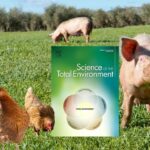
Benefit/risk analysis

News
+ Info sheets
Agenda
Benefit/risk analyses of products containing nanos
By the AVICENN team – Last modification in April 2022
The benefit/risk analysis of products containing nanos must cover the whole life cycle of the products and integrate the impacts for all involved… especially the most vulnerable.
It is not only the health and environmental risks associated with nanomaterials that need to be carefully assessed.
The benefits of nanos also need to be seriously examined and evaluated.
For each type of product, the following questions arise:
- What needs are nanomaterials supposed to meet?
- What functions do they perform? Are they essential? Useful or futile? Who benefits (manufacturers / distributors / users)?
- What evidence is there of the benefits described? Are they provided in understandable language? On a sales pitch or on a safety data sheet?
- Do these pieces of information describe noticeable, perceptible and important benefits to you?
- How are decisions made: who decides what, at what point in the innovation life cycle? Which stakeholders are impacted at each stage of the innovation life cycle? Have they been able to express an opinion and is it taken into account?
- Is the use of nanomaterials limited, reserved for a confined professional environment?
- Will the health, environmental and social impacts be significantly altered by a commercial extension to the general public?
- Have the consequences of a generalization of these products integrating nanomaterials / nanotechnologies been simulated?
- Have waste flow simulations been done?
- Do alternatives exist? and are they more or less “effective” than the advertised properties related to “added nanos”?
Elsewhere on the web
In French :
- Ecological transition in research: greener chemistry for a sustainable world, Pierre Lalanne, La Recherche, 28 March 2022
In English:
-
Forget microplastics: we may have a much smaller problem, The Guardian, 25 April 2022
Any questions or comments? This information sheet compiled by AVICENN is intended to be completed and updated. Please feel free to contribute.
Other news on the topic
Our information sheets to go further
Upcoming Nano Agenda
14
Déc.
2025
Nano Rumeurs (C’Nano, Paris – France)
Paris
Conference
- Spectacle Art & Science – When science changes as it passes from mouth to mouth
- A unique participatory experience centered on the human factory of knowledge, where two fascinating worlds meet: nanomedicine, with its nanoparticles and cellular nanovectors, and quantum physics, with its superimposed states and complex systems.
- Organizers: Centre National de Compétences en Nanosciences (C’Nano), in collaboration with the Commissariat à l’Énergie Atomique (CEA), the Institut Polytechnique de Paris (IPP) and the Centre National de la Recherche Scientifique (CNRS).
- Speakers: Florence Gazeau, academician, physicist, research director at CNRS, and Charles Antoine, PhD in physics, lecturer at Sorbonne University, and Albert Moukheiber, PhD in neuroscience.
- Location: Théâtre de la Ville
- Website: https: //www.theatredelaville-paris.com/…/rencontres/nano-rumeurs…
2
Juin
2026
Emerging pathologies and risks (CNMST 2026, Lyon – France)
Lyon
Congress
- 8th Congress of Occupational Medicine and Health (CNMST 2026)
- Theme 5: Emerging pathologies and risks, Mr Henri Bastos (ANSES), Pr Lynda Bensefa-Colas (AP-HP), Dr Catherine Nisse (CHU Lille)
- Website: www.medecine-sante-travail.com
26
Juin
2026
Nanomaterials and Health (ANSES, Maisons-Alfort)
Maisons-Alfort
Dialogue Committee
- 20th meeting of the “nano and health” dialogue committee
- Organizer: ANSES
File initially put on line in October 2013



